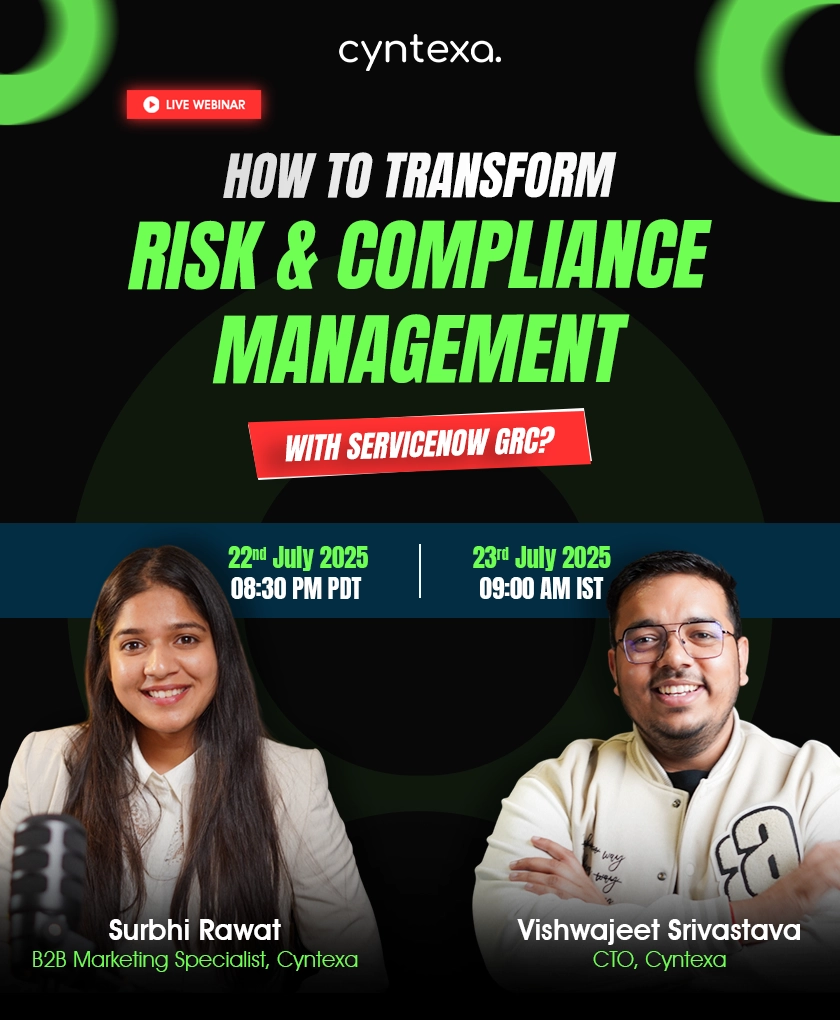Integrating Zendesk with Salesforce: A Comprehensive Guide
Table of Contents
Customer experience is primarily becoming the basic necessity that defines how well a business is going to perform in the market. To deliver exceptional service, your sales and support teams need to operate as a single, unified force.
Let’s say a customer is reaching out to get support with complex problems, only to find out that the company’s database has a past interaction record with the sales team. Not only would he get frustrated but also dissatisfied with your ability to resolve their concern.
But hold on. We have a powerful solution for this: Zendesk and Salesforce integration. This connects your CRM with the customer support platform to a third-party platform, creating a unified environment where all teams have a 360-degree view of the customer journey.
But wait, what exactly are Zendesk and Salesforce? And why do you need to integrate them? Don’t worry, we won’t leave you hanging.
Stay tuned as we will be discussing how it can streamline sales and customer support processes, eliminate data redundancies, and allow your teams to deliver the customer experience that they need.
What is Zendesk?
Zendesk is a cloud-based software that helps businesses with customer support and simplifies customer interactions by personalizing it on all virtual devices. Claiming itself as “a service first” solution, Zendesk combines all your customer interaction channels like website, social media handles, applications, etc., and brings it all to one platform, making customer support an easy job.
The functionality of Zendesk goes beyond ticketing. It offers a comprehensive solution that allows your agents to track and respond to support queries efficiently. With this, administrators get updates on agents’ performance, ensuring all your leads and customers get the attention they want.
Explore what other features Zendesk offers:
Features of Zendesk
Here’s a comprehensive breakdown of Zendesk’s features, designed to transform your customer support:


1. Ticketing System
This is the place where all your customer inquiries are stored. Zendesk’s ticketing system captures inquiries raised by customers as unique “tickets” with a dedicated ID. Further, you can assign these tickets to agents with the relevant expertise and update the relevant information till the end of the process. It makes sure that every query is solved in the huge blunder of the database and that every customer gets the required attention
Key Functionalities:
- Effortless Ticket Creation and Management: You can create tickets from sources like emails, chats, or phone calls and further manage them through features like assigning agents, adding updates, and keeping tabs on the progress.
- Prioritize with SLAs: You can also set Service Level Agreements (SLAs) to decide the timeline for responses and resolution timeframes. Also, you can monitor these SLAs to ensure timely customer service.
- Agent Empowerment: Zendesk has tools that equip your agents in times of need. Further, with the help of these tools, you can track the performance of agents as well with CSAT ratings and time tracking tools. SLAs keep them focused on resolving issues within targeted timeframes.
2. Multi-Channel Support
Zendesk is not only about email; its offerings extend to a unified platform that manages customer interactions across various channels:
- Seamless Integration: You can integrate email, social media platforms, phone support, and even chatbots.
- Real-Time Engagement: Zendesk offers real-time chat support. You can put chatbots on work to answer customers’ basic questions instantly, reducing waiting times for your customers.
- Omnichannel Experience: It provides a smooth and consistent customer experience regardless of the channel they choose to interact with you.
3. Empowering Customers with Self-Service
Zendesk empowers your customers to find answers on their own with a robust knowledge base:
- Comprehensive Knowledge Building: You can build a vast library comprising articles, guides, FAQs, and manuals to tackle common customer issues.
- Community Power: Zendesk also enables you to increase customer engagement through a community forum. In this platform, customers connect and help each other, which reduces the load of your customer support team and creates a sense of community. This comes with only the Pro and Enterprise plans as a perk.
- Language Options: With the basic plan, you only get one language in your knowledge base. While you go up, you can get up to 40 languages and advanced self-service features with slightly higher costs.
4. Chat, Messaging, and Phone Support: A Well-Rounded Approach
Zendesk offers a complete combo for messaging, phone call support and messaging in one single platform:
- Real-Time Chat with Chatbots: You can engage customers through real-time conversations with live chat functionalities. Zendesk’s chatbots are capable of taking up simple inquiries and buying time for agents for more complex issues.
- Integrated Messaging and Phone Support: Businesses operating from different locations can use other messaging apps or phone support apps. Zendesk allows you to integrate those apps according to the customers’ preferences.
- Mobile App Convenience: You can extend support on the go with the Zendesk mobile app, which allows agents to help customers from anywhere in the world.
- Contextual Interactions: Zendesk’s “customer context” feature keeps track of past customer interactions, essential customer information, and interaction history, creating personalizations in customer support across all channels.
5. Customer Insights with Analytics and Dashboards
With Zendesk, you get a powerful analytics and dashboard for getting data-driven customer insights:
- Zendesk Explore: Zendesk Explore acts as a comprehensive analytics tool for collecting, measuring, and analyzing customer data to create valuable customer insights. You can use this data to identify upcoming trends and patterns, understand customer behavior, and optimize your support operations.
- Actionable Insights: It provides data-backed insights from performance dashboards built on key metrics like customer satisfaction and support agent efficiency.
- Customization for Control (Only available for Enterprise & Pro Plans): Pro and Enterprise plan users get customizable dashboards. These dashboards are further customizable and focus on the metrics that help guide strategy-makers and provide insights that promote informed decision-making.
- Data Export for Further Exploration: Zendesk allows you to export data to a centralized database, which speeds up the analysis and manipulation of customer support data using business intelligence tools.
6. Automating Workflows for Efficiency
How can we forget internal workflows and efficiency? Zendesk has tools for that, too:
- Automated Ticketing: Zendesk automatically creates tickets on the basis of customer messages, reducing the errors caused by manual data entry.
- Intelligent Routing: Automated workflows are there to route tickets to the right agents based on pre-defined criteria. It ensures that all the issues coming from different sources are addressed by specialists with the right expertise.
- Trigger-Based Automation: Setting up triggers is also easy. It automates specific actions based on certain criteria, like sending automated responses to basic and most commonly asked questions or escalating urgent issues.
- Pre-Configured Macros for Speed: You also get pre-configured macros to automate repetitive tasks and expedite response times for general customer inquiries.
7. Customization and Integrations: Building a Zendesk That Fits You
The scope for Integration and customizations is taken care of in Zendesk, which optimizes your support experience:
- App Marketplace Expansion: Zendesk empowers you to integrate a vast array of readily available third-party apps and add-ons available in the Zendesk Marketplace.
- Branding Your Support Interface: Zendesk provides a range of customization options and templates, which help design a support interface that resonates with your brand identity and creates a cohesive customer experience.
- Advanced Integrations with API Support: Zendesk offers API support to businesses with in-house development teams to create integrations to connect Zendesk with their existing business tools and create a truly unified ecosystem
Integrating Zendesk with Salesforce: A Step-by-Step Process


Salesforce Zendesk Integration establishes a connection between your primary CRM system and your support platform. This powerful tool allows you to:
- View Zendesk Tickets in Salesforce: It offers real-time access to customer support tickets directly within the Salesforce Account, Contact, Lead, or Opportunity pages.
- Create and Edit Tickets: With Zendesk Salesforce Integration, your sales reps can create and edit Zendesk tickets from within Salesforce, increasing collaboration between teams.
- Synchronize Data: This integration consistent data flow by syncing Salesforce Accounts, Contacts, and Leads to your Zendesk organization.
Compatibility and Permissions:
Remember, the integration between Salesforce and Zendesk is available for some editions of Salesforce, such as Performance, Unlimited, Enterprise, and Developer. You can get add-on options for other editions.
To set up the integration, you need administrator access in both Zendesk Support and Salesforce. An API-only Salesforce user is not eligible to connect to this integration.
Step-by-Step Setup:
The integration process involves a few key steps:
- Check Salesforce Session Settings: Check your Salesforce session settings are configured correctly.
- Connect Zendesk and Salesforce: Establish the connection between the two platforms.
- Assign User Access: Define which Salesforce users can access Zendesk tickets within Salesforce.
Checking Salesforce session settings
Your Salesforce session settings mustn’t be confined to a specific IP address. A locked session will lead to disconnecting the integration and then expiration. Here’s how to disable it:
Follow the steps given below to disable Salesforce sessions from being locked by an IP address:
- First, Log in to Salesforce.
- Go to cog (Setting Icon) and click on “Setup.”
- Go to “SETTINGS > Security > Session Settings.”
- Now, deselect “Lock sessions to the IP address from which they originated.”
- Cross-check to ensure the Lock sessions to the IP address from which they originated checkbox is not selected.

Connecting Zendesk to Salesforce
It is best to test the integration with your sandbox accounts for both Zendesk and Salesforce first. Here’s how to do this:
Here are the steps to connect Zendesk to Salesforce:
- Login to your Zendesk Admin Center, now go to “Apps and integrations” from the sidebar.
- Select “Integrations > Integrations”.
- Click “Connect” next to the Salesforce integration.
- Choose the specific Salesforce instance you want to connect with. You can only connect one Zendesk account with one Salesforce account.

- Click “Install managed package.” to open Salesforce in a new tab and install the necessary components. Log in to Salesforce in a separate browser window to avoid breakdowns.

- Next, Select “Install for All Users” to grant everyone access to Zendesk ticket viewing within Salesforce.
- Click “Install” in Salesforce.
- Once installed, return to Zendesk Admin Center to accept the terms of service, and click “Connect.”
- Grant permission on the “Allow Access?” screen by clicking “Allow.”
Tadaa! Your Zendesk and Salesforce accounts are now integrated. But if you are struggling with complex configurations or custom workflows?, it might be time to bring in the pros. Consider partnering with certified Salesforce integration professionals who can streamline the process and customize it to your exact needs.
Why you should consider Salesforce integration with Zendesk?


Salesforce integration with softwares like Zendesk has proven to be powerful support specially to the agent. As per Zendesk, introducing customer service solutions as an integrated part of your CRM can boost customer satisfaction by 7%. This improvement helps in faster resolution of customer queries and delivery of a more consistent customer experience.
Let’s explore how you can benefit from Zendesk and Salesforce integration:
1. Deeper Customer Understanding:
By integrating Zendesk and Salesforce, businesses get a 360-degree view of both sales and services. Every interaction that happens in Zendesk support is easily aligned with Salesforce’s sales and service data. This comprehensive knowledge empowers you to anticipate customer needs and personalize offerings accordingly. This unified database also helps resolve customers’ past issues, which ultimately increases loyalty and satisfaction.
2. Boosted Agent Efficiency:
If your agents are still stuck between multiple platforms, consider integrating Salesforce with Zendesk. It allows agents to access and update Zendesk tickets right there in Salesforce, which reduces the possibility of errors. Salesforce automation also regulates all the workflows impacting the agent’s efficiency to deliver a better experience to your customers, like ticket assignments and updates.
3. Real-time Data Synchronization:
Are you worried about data dispersion across platforms? You can put your overthinking aside as this integration ensures that whenever you are making changes in one platform, it must also reflect in another one. This promises data consistency and stress-free data maintenance across the organization.
4. Increased Agent Productivity:
Repetitive tasks become a thing of the past with automation. With Zendesk, your agents can focus on more complex issues and provide support to those customers who need more help. It also improves efficiency, translates to quicker customer service, and enhances satisfaction.
5. Data-Driven Insights:
What if we tell you that you can get the insights in combination with all the platforms you are utilizing with this integration? With Zendesk and Salesforce combined, you get comprehensive reporting & analytics on customer behaviour, support trends, and agent performance to make data-driven decisions that make your support operations better than ever.
6. Personalizing Customer Journey:
Equipping agents with a unified customer view empowers agents to personalize customers’ experiences by resolving the queries raised by them quickly and effectively.
By integrating Zendesk and Salesforce, you create an easy way to achieve customer success. You’ll not only streamline operations but also empower your team to deliver exceptional customer experiences.


The Final Take
Integrating Zendesk and Salesforce brings, nonetheless, exceptional customer success. This integration has already helped hundreds of companies in delivering easy customer support.
The benefits of this initiative are loud and clear. Who wouldn’t want a 360-degree view of customers, high agent efficiency, and real-time data harmony? This gets faster response times to customers, improved agent productivity, and data-driven insights that fuel better support operations. Ultimately, this unified customer journey fosters higher satisfaction and loyalty.
Looking for a trusted Salesforce integration company? Partner with Cyntexa to build a robust and unified customer data platform.
Don’t Worry, We Got You Covered!
Get The Expert curated eGuide straight to your inbox and get going with the Salesforce Excellence.
AUTHOR
Shubham
Service Cloud, Salesforce Managed Packages
With over 5 years of experience, Shubham specialize in curating solutions on Salesforce Service Cloud, Nonprofit Cloud, Consumer Goods Cloud, Managed Packages, and ServiceNow ITSM. He designs and implements end-to-end service solutions that improve operational workflows and ensure seamless integration across enterprise systems. Shubham’s expertise lies in creating secure, efficient, and agile platforms tailored to unique business needs.


Cyntexa.
Join Our Newsletter. Get Your Daily Dose Of Search Know-How









